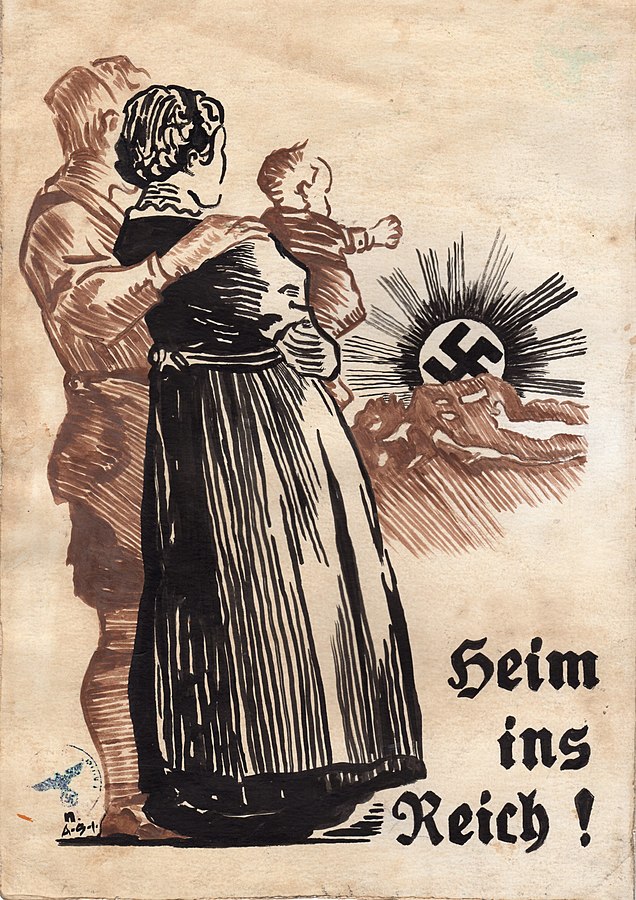Becoming a Nazi to fight Fascism
The forced Italianization of South Tyrol and the pro-Nazism of the South Tyroleans

Pro-Nazi and Pan-German propaganda poster aimed at South Tyroleans called to vote between 1939 and 1940. The motto "Heim ins Reich", which can be translated as "Return to the Reich", was used to exhort Germans living outside of Germany (including those in South Tyrol) to work towards the reunification of their territories with the Third Reich. - Commons Wikimedia
After World War I, South Tyrol, formerly Austrian, was annexed to Italy. Following the rise of fascism, the Italian government initiated a policy of forced Italianization in the region, now renamed Alto Adige. The use of German was banned in courts, public offices, and schools. Place names were Italianized, and numerous Italian teachers, workers, and military personnel were settled in the area. The German-speaking population organized various forms of resistance against this forced assimilation. One such effort was the establishment of Katakombenschulen — clandestine schools where children were taught in their native language, German.
With Hitler’s rise to power, many South Tyroleans began to see Germany—and the pangermanism ideology central to Nazism—as an ally in their struggle against Italian fascism. Starting in 1934, pangermanist organizations such as the Volksbund für das Deutschtum im Ausland (People’s League for Germanness Abroad) became active in Alto Adige, led both by locals and agitators from Germany.
Tensions peaked after the Anschluss, as pro-Nazi pangermanists clashed with Italian authorities. Many South Tyroleans hoped Alto Adige would follow Austria’s example and unite with Germany. In April of that year, fascist police fired on pro-Nazi demonstrators.
However, with the rapprochement between Italy and Germany solidified by the Pact of Steel in 1939, the South Tyrol issue seemed resolved. South Tyroleans were given two options: retain Italian citizenship and remain on their land or become German citizens and relocate to Germany or newly conquered eastern territories. A referendum followed, with 185,000 out of 267,000 voters opting to leave Italy for Nazi Germany.
Despite this, wartime events meant only 77,000 actually emigrated, and after the war, about one-third of them returned to Alto Adige.
Sergio Salvi, Le lingue tagliate. Storia delle minoranze linguistiche in Italia, Rizzoli, 1975
Pierre Milza, Serge Berstein, Storia del Fascismo, Rizzoli, 1995
2025-06-03
Salvatore Ciccarello
